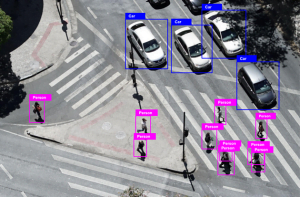Continuous Integration and continuous delivery are two inseparable parts of the constant workflow. It enables ongoing automation and monitoring throughout the software development lifecycle. Integrating features to deploy and deliver all are part of the CI/Cd pipeline. Both DevOps and SREs work in an agile way to support CI/CD process. So is there any difference between CI and CD? Where CI ends and CD begins?
Continuous Integration
Continuous integration (CI) is a way of integrating code into a shared repository. Developers can maintain code quality by identifying potential issues at an early stage. It ensures that new features are continuously integrated with the master branch. Testing at the same pace with changes is a must to ensure code quality.
Developers commit code in the CI pipeline. They can smoothly build unit test, pull request system, and merge it with the process. Here the continuous integration process ends.
Continuous Delivery
Continuous delivery is a process of preparing code changes to release to production. It allows developers to automate the testing, including UI, load, integration, API reliability, and verify updates. As continuous integration ends, continuous delivery begins. Here are some significant stages of CD:
- · Developers build the code according to the requirements.
- · Preparing is written unit test.
- · Locally test the code to ensure it will not break in the middle of the process.
- · Update the branch with the latest code.
- · Commit the changes.
- · Deploy the code into different testing environments.
- · Merge the code into the central branch.
- · Deploy the code into the production.
Automation Testing in CI/CD Pipeline
Auto testing is a part of both the CI and CD processes. Developers apply auto testing after building stages and when the code is ready to deploy. Teams can run all the tests, including UI tests, unit tests, and integration tests, together to ensure quality.
It is essential to distinguish between continuous integration and continuous delivery. Without continuous integration, success in continuous delivery is impossible. It also has some standard features and tools. Jenkins, Travis CI, GitLab, and Bamboo are the most commonly used tools in CI/CD pipeline. Businesses need to ensure the best practices and adoption to enjoy benefits like:
- · Improved efficiency, fewer errors, and fewer manual tasks.
- · Speed up the code release process.
- · Respond quickly to customers.
- · Reduce cost and increase quality.
CI checks code changes at an early stage. Thus reducing the risks of failure, CD allows developers to deliver new code changes quickly. Implementing both processes together provide organizations a better opportunity to collaborate seamlessly and release the best quality software.
- Cyberatic
- March 23, 2022
- 1:37 pm
- One Comment
- CI/CD, SRE








